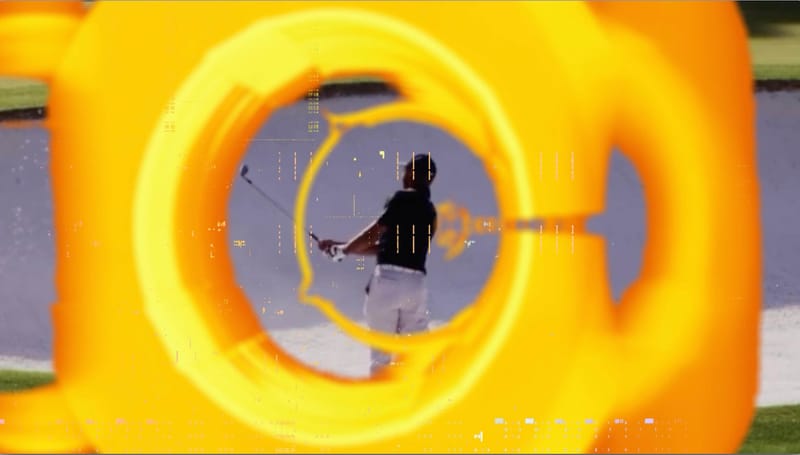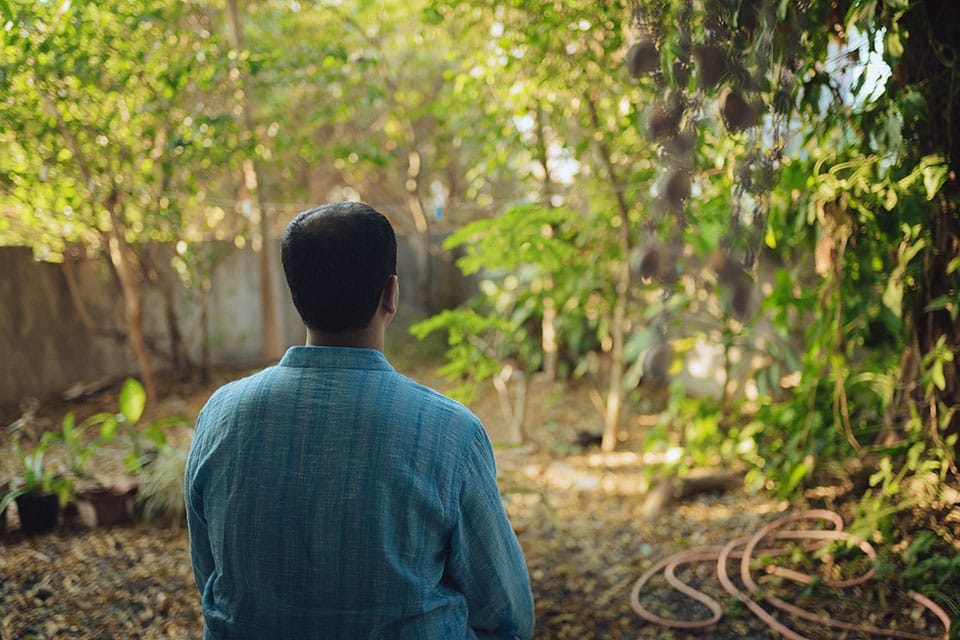The artist's new work traces the geological origins of our digital obsessions
As someone who’s spent nearly twenty years thinking about games and playing various digital ones, I rarely think about the device itself. I hold a Steam Deck in my hands or pick up a controller for PlayStation 5, but what lies in my hands is elusive. I’m only reminded when the contoured plastic starts to heat and perspiration coats the thumb stick, distracting my movement. Artist Sam Ghantous had the same blind spot.
"Hardware scares me," he confesses over video chat. "I'm really comfortable in front of the screen on my laptop, making something." So, his new work "your golf course made my GPU” which opened at YveYANG Gallery earlier this year, is a bit of personal therapy, pushing us all to think harder about the relationships between our digital and physical worlds.
Ghantous doesn't have much of a relationship with games. He came to them through software, through the game engine Unity, as a way to reflect on how everything today tends toward gamification. This admission directly invokes both the leisurely sport and the graphics processors that power modern gaming. But for Ghantous, it's less about games themselves than the "big sludge of media" that surrounds us—accessible on one hand, black-boxed on the other.
The three-channel video at the center of his recent show at YveYANG Gallery performs an uncanny excavation: it reveals that the same ultra-pure silica mined in North Carolina ends up both in the microchips surrounding us and in the sand traps at Augusta National Golf Club. This geological coincidence becomes Ghantous's entry point into questions about extraction, desire, and the material costs of our digital lives. How far will we go for better graphics, faster processors, and more compute power for AI? What are we willing to exhaust from the earth?
your golf course made my GPU, Video, 10’40 (2025)
Ghantous forced himself into uncomfortable territory for the physical installation, printing UV images onto silicon wafers—the raw material of microchips. These wafer works function as “portals,” he says, with frames made from rings of sand scanned in his studio. Behind the cleared dust, ethereal reimaginings of Botticelli paintings emerge.
"I'm not standing on some moral high ground," Ghantous admits during our conversation, itself mediated by silica. "I'm struggling with the temptations, both for new things and for fascinating things, but also trying not to look at my phone more." This double bind—knowing better while still participating—animates the work. The video features two voices in dialogue, one synthetic childlike inquisitor, the other as the artist’s voice providing context. Ghantous describes this as an internal dialogue made external, toggling between pleasure and guilt.
Sand becomes the work's central obsession, appearing in its many states throughout the video: industrial product, quartz crystal, concrete ingredient, silicon source, ski slopes, video game worlds. The video layers industrial footage with extreme and quotidian sports, showing a golfer trapped in a sand bunker while that narrator intones about the relationship between what is built and what is lost. A Chinese sand dredger tears up sand by the shipful and is described as "editing the map"—using the language of games to describe planetary-scale extraction.
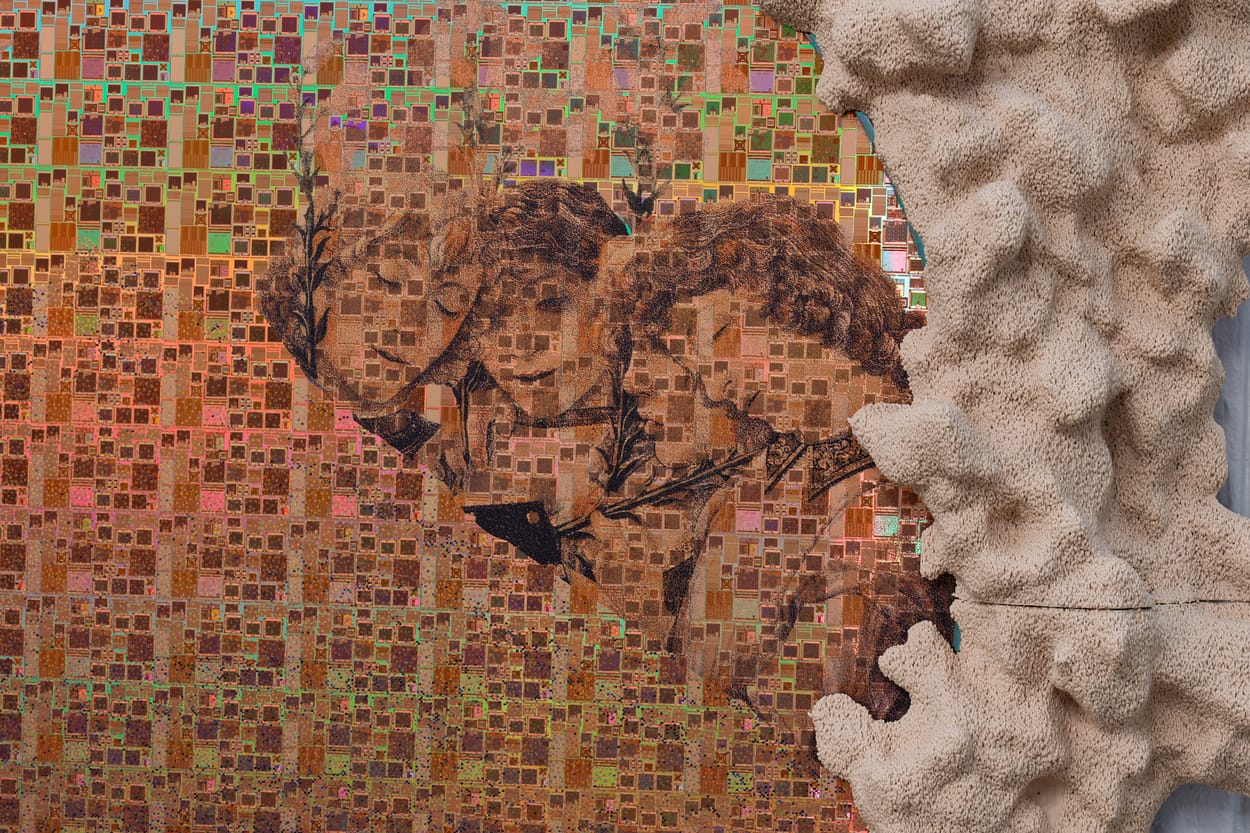
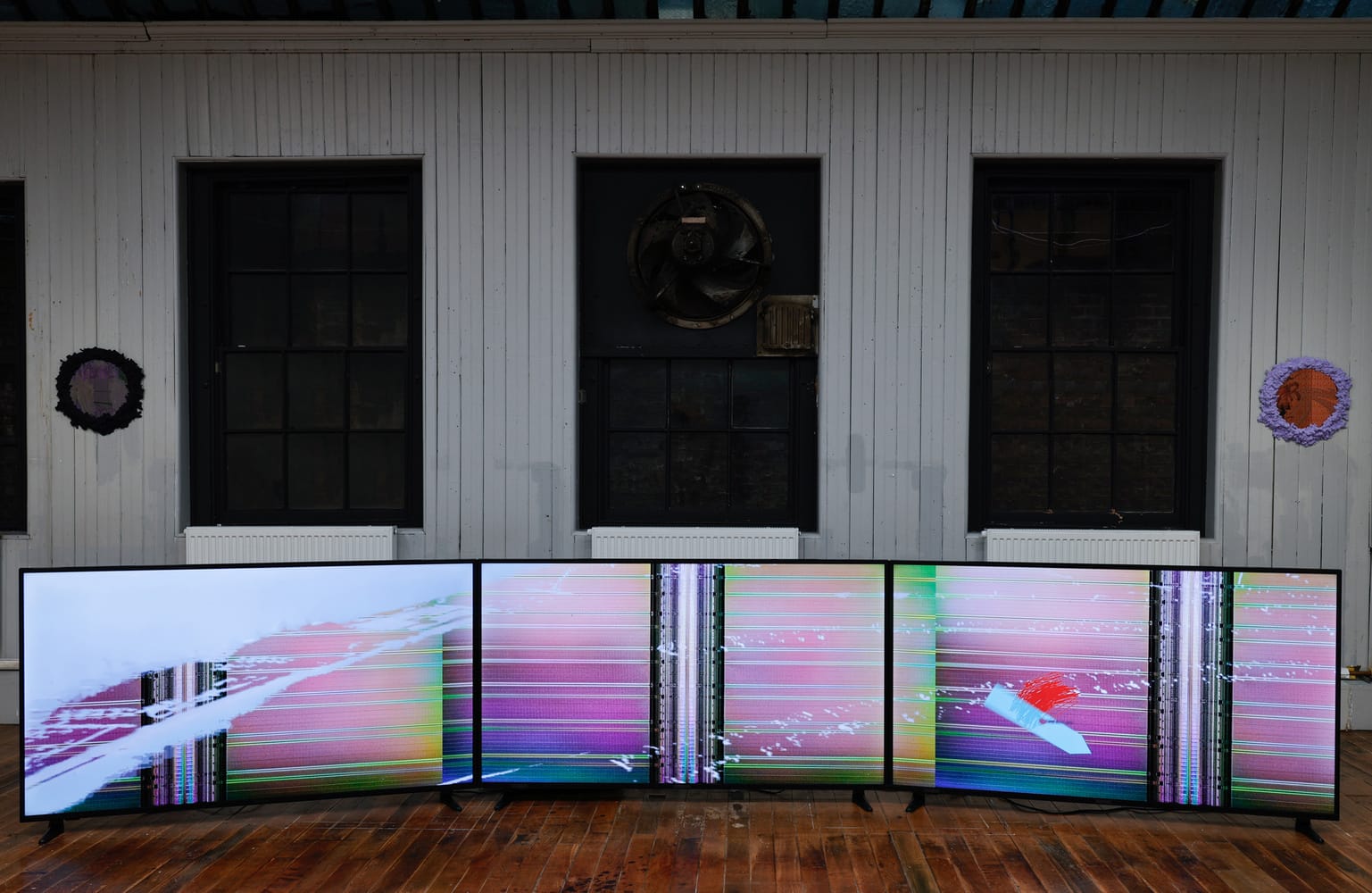
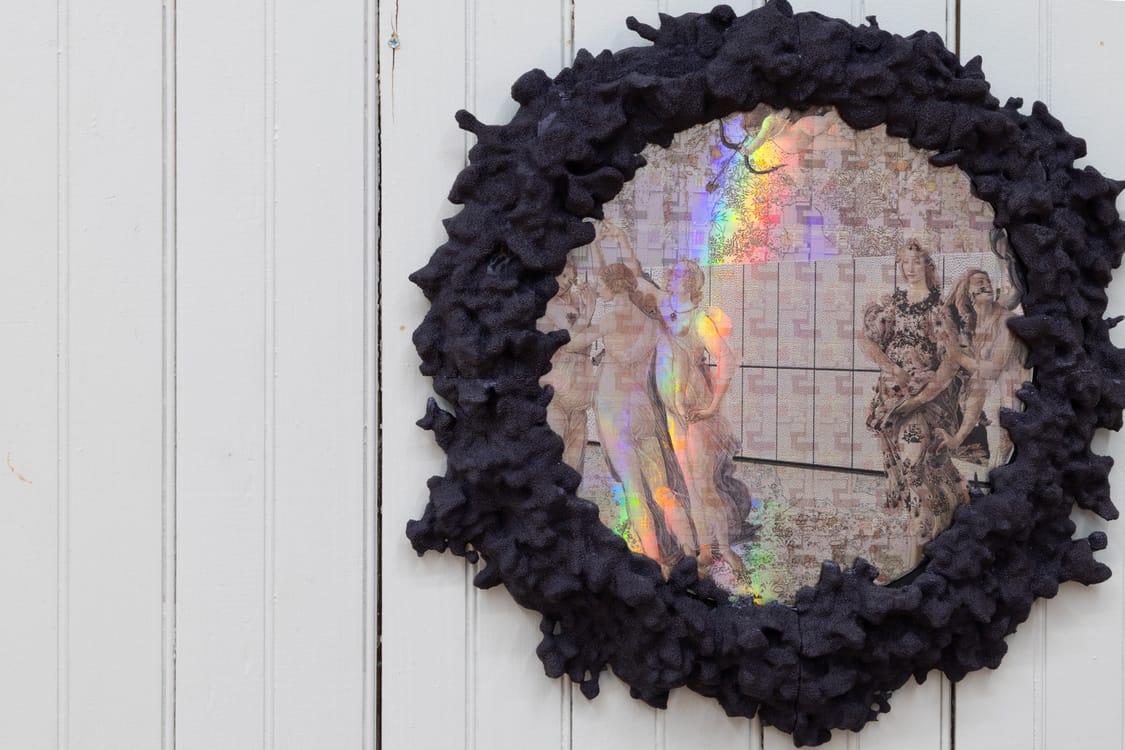
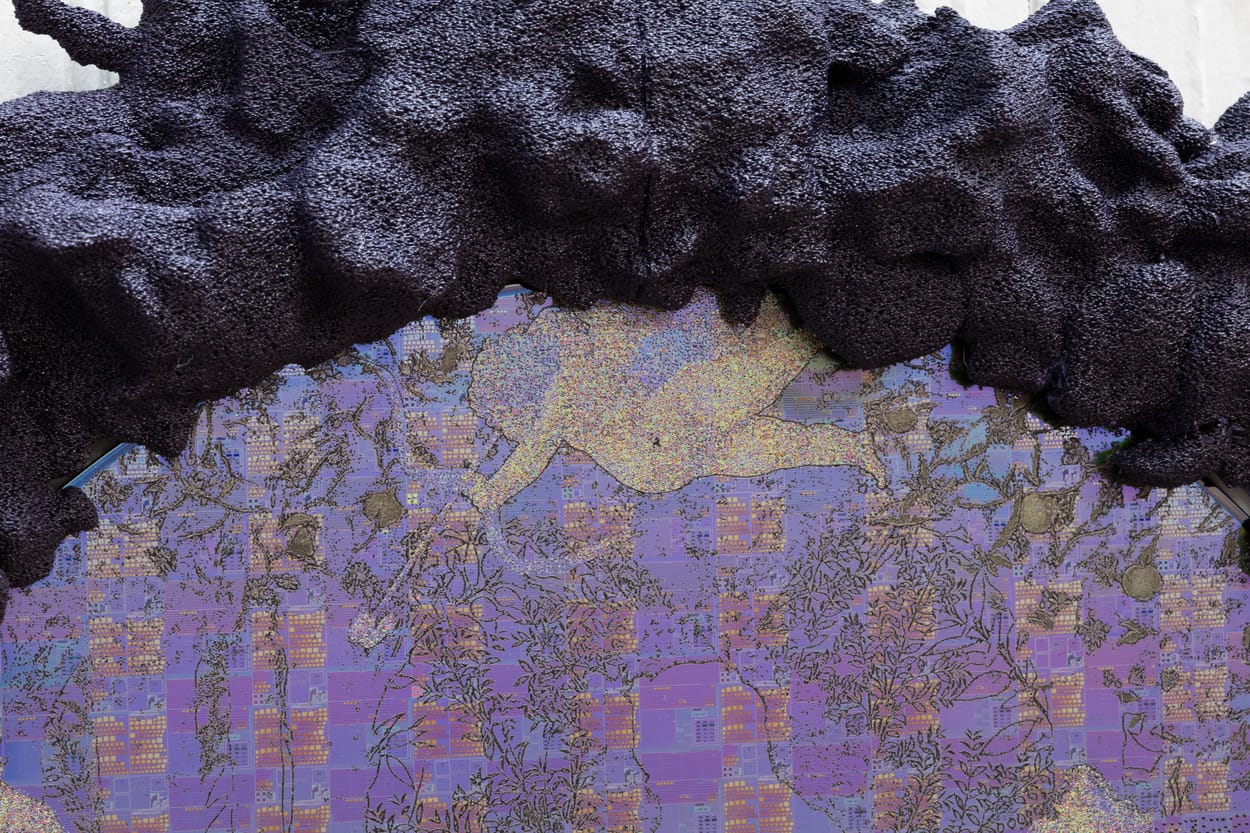
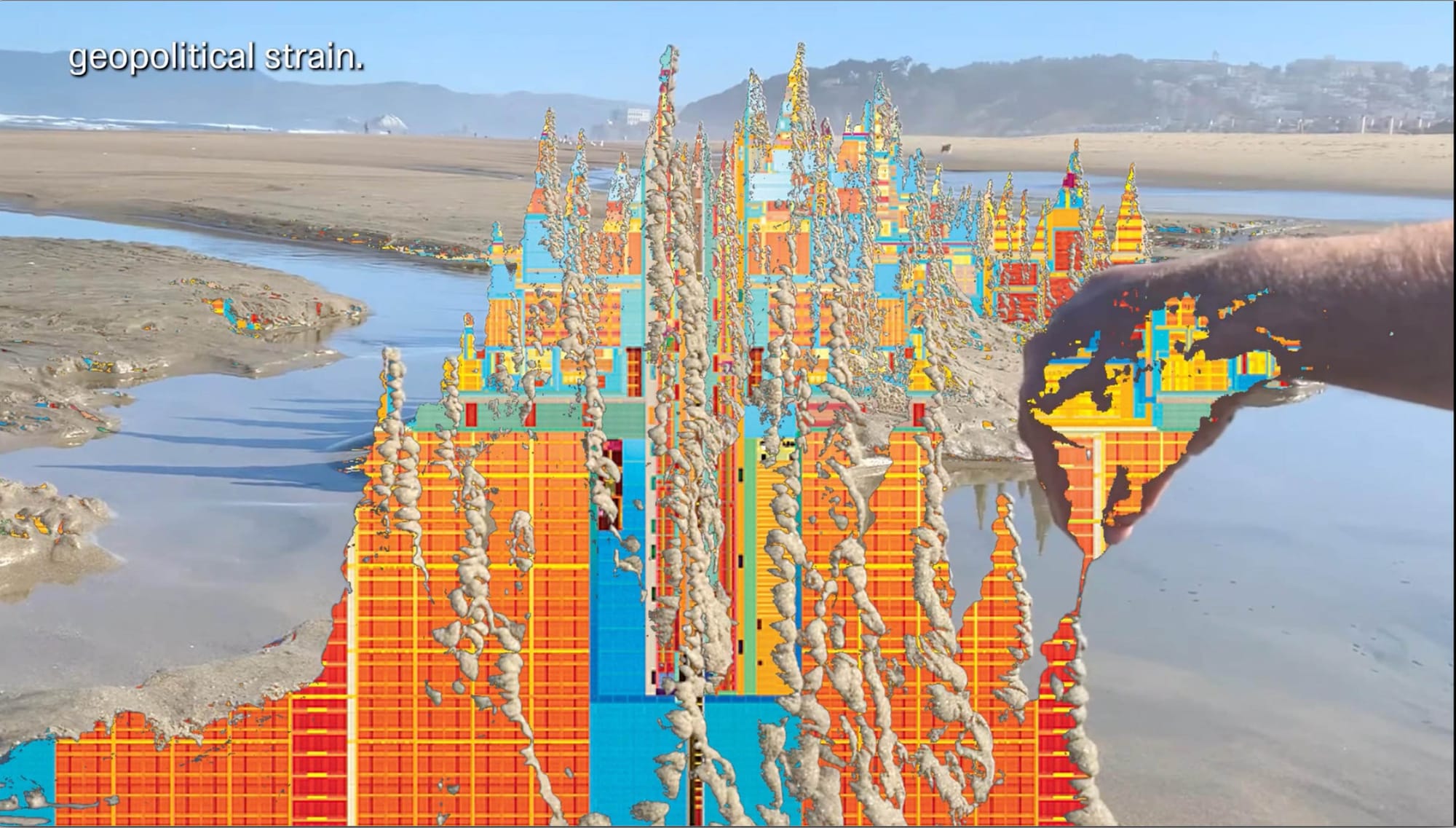
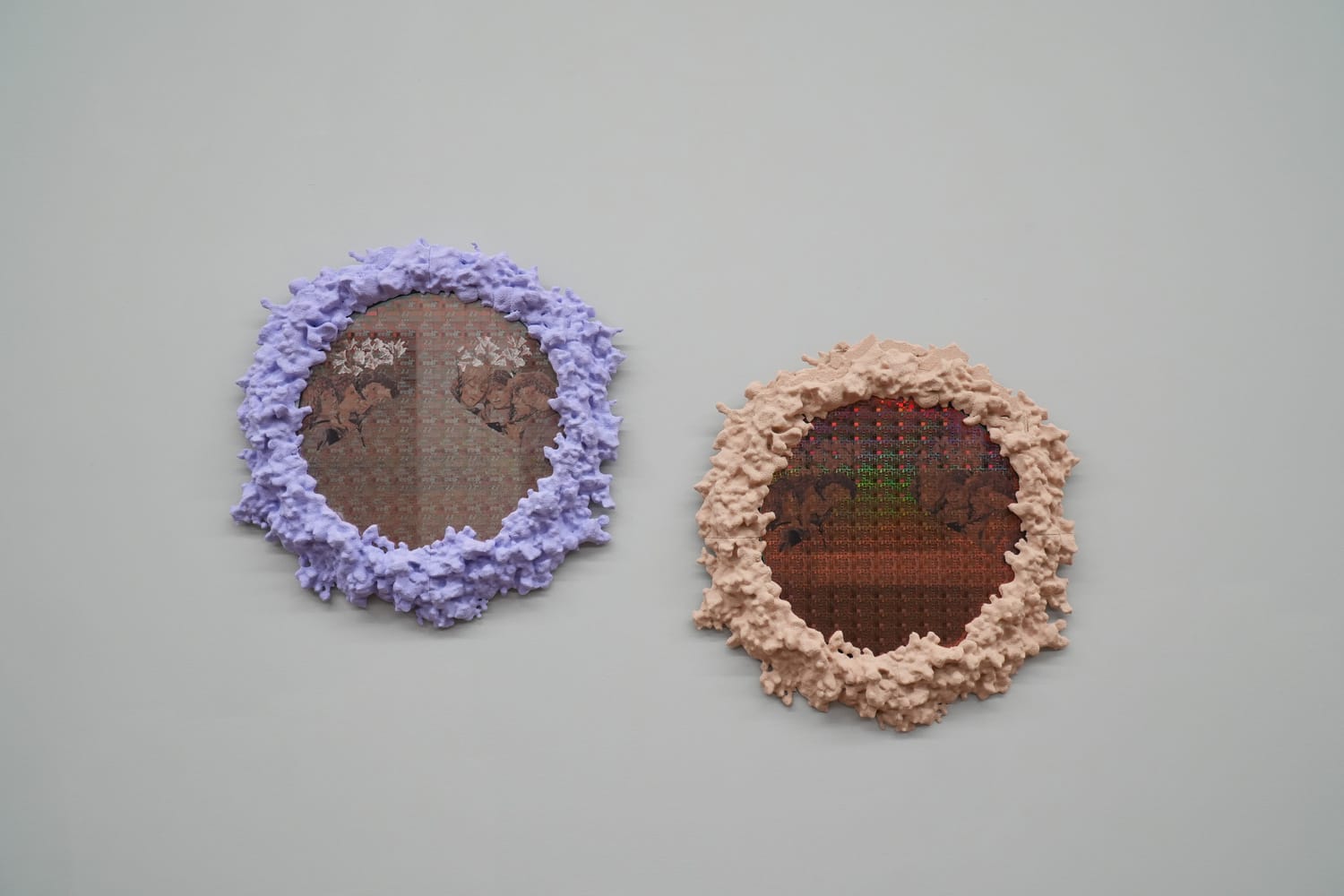
Born in Oman and shaped by a childhood of perpetual movement across the Middle East and North America, Ghantous identifies with sand's itinerant nature. "The show has helped me recognize the dust that accumulates around us," he explains. Like the silica forged by millions of years of erosion and transport, he has navigated currents of global upheaval, moving between countries, institutions, and career paths—from architect to artist.
The work emerged from what Ghantous jokingly calls "collecting lots of things"—lab footage, clips from the 1964 Hiroshi Teshigahara film "Woman in the Dunes," 3D models, and images of wafer production facilities. Through this accumulation, he builds up and erodes moving images on top of one another, seeking edges between elements both conceptually and visually. The three-channel format creates a horizontality he thinks of as Earth's horizon, the thing beneath us that undergirds the whole project.
I'm struggling with the temptations, both for new things and for fascinating things, but also trying not to look at my phone more."
What makes "your golf course made my GPU" particularly resonant is how it makes abstract connections tangible. For those who play games or use technology, questions about where materials come from remain conveniently distant, covered up by marketing narratives about faster and better. Ghantous forces a reckoning with the physical reality: that rare geological formations from hundreds of millions of years ago enable both our microchips and premier golf courses. The extraction happens first, and then we figure out what to use it for.
Currently an Assistant teaching and researching at ETH Zürich, Ghantous hints at future projects that might include games affecting one another across distances, sculptures bringing earthliness and computation together, or perhaps a chip that runs at the scale of deep time—where "Hello World" might take hundreds of millions of years to print. These ideas overflow from his recent attention toward geology and Earth, seeking new languages for the consequences of our actions on other parts of the planet.
"Your golf course made my GPU" doesn't offer solutions. It’s a confession and an indictment. The work asks: What role does an individual play in these vast movements? What can be concluded from this arcane passage from mineral to binary? And ultimately, in Ghantous's haunting formulation: Who are you?
Enjoy this profile? Consider supporting Killscreen for the year for more essays, interviews, and profiles on the future of interdisciplinary play.

